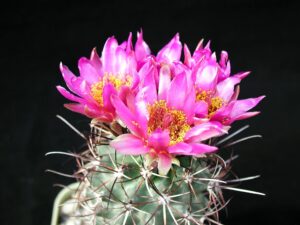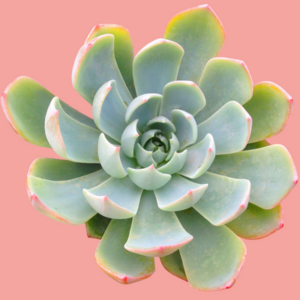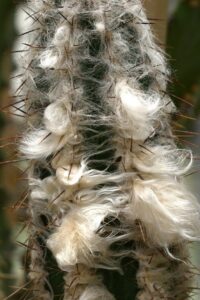Sulfur: The Unsung Hero of the Plant World
While often overlooked in discussions pertaining to essential plant nutrients, sulfur plays a pivotal role in plant health and development. This unassuming element is more than just a mere chemical; it is an indispensable dietary component that contributes vitally to the ecological dance of life. Sulfur’s significance stretches beyond mere functionality; its presence is synonymous with vigor, resilience, and unparalleled growth potential.
The Multifaceted Role of Sulfur in Plants
At its core, sulfur is a macronutrient, classifying it equally with nitrogen, phosphorus, potassium, calcium, and magnesium. It is an integral component of several amino acids, particularly cysteine and methionine, which are building blocks for proteins. In essence, without sulfur, the construction of proteins is undermined. Protein synthesis is fundamental to a plant’s growth and development, influencing not only vegetative growth but also floral and fruit production.
Moreover, sulfur is a critical ingredient in the formation of essential oils and certain vitamins, particularly vitamins B1 (thiamine) and B7 (biotin). These compounds foster both metabolic processes and health, leading to lush foliage and vibrant flowers, predominating an aesthetic landscape. The ramifications of sulfur deficiency can be severe, manifesting as stunted growth, discolored leaves, and diminished yield. With sulfur enriching complex biochemical pathways, it catalyzes reactions that bolster plant defenses against pests and diseases, making it a crucial ally in sustainable agriculture.
Visual Indicators of Sulfur Deficiency
Understanding sulfur’s aesthetic implications begins with recognizing the visual cues of its deficiency. A hallmark sign is the chlorosis of older leaves, which often turn a pale green to yellow while the veins retain their dark hue—a condition termed ‘interveinal chlorosis.’ This vivid contrast draws attention and, quite literally, illuminates the need for intervention. The unwelcome transformation of rich green to muted yellow prompts vigilance among gardeners and agronomists alike. In the quest for verdant vitality, sulfur serves as the beacon of hope for plants in distress.
Beyond leaf color changes, sulfur deficiency can lead to reduced flowering and fruiting, diminishing the overall beauty of the plant and impeding the agricultural yield. This dual-purpose characteristic—serving both physiological functionality and aesthetic appeal—elevates sulfur beyond mere necessity, cultivating a certain intrigue about its role in horticulture.
Soil Dynamics and Sulfur Availability
The biodynamic connections between sulfur and soil health are remarkably intricate. Sulfur resides in soil minerals, organic matter, and atmospheric deposits. Soils that are high in organic matter generally contain greater sulfur levels, suggesting an intrinsic correlation to sustainable practices.
Microbial activity is also essential in transforming elemental sulfur into forms accessible to plants. The process of mineralization, where sulfur is converted from organic compounds into inorganic forms such as sulfate, is paramount. These microorganisms act as silent artisans of the soil, breaking down complex organic matter and releasing sulfur in a form that is available for plant uptake. However, competing for resources, changes in temperature, moisture levels, and soil pH can dramatically impact microbial populations and their proficiency in mineralizing sulfur.
In regions with heavy rainfall, leaching can result in substantial sulfur loss from the soil profile, while arid landscapes may exhibit sulfur concentrations that are too low. This variance underscores the importance of soil testing and management practices that nourish soil organisms and sustain sulfur levels. Engaging in soil amendments, like gypsum or sulfur-rich compost, can enhance sulfur availability, positioning it as a key player in crafting thriving ecosystems.
Applications of Sulfur in Agriculture
The fascinating versatility of sulfur extends to its application in agricultural practices. Sulfur fertilizers, available in various forms, have adapted to the unique needs of modern farming. Elemental sulfur, along with ammonium sulfate and potassium sulfate, serves as a valuable resource to rectify deficiencies and improve soil composition.
Inorganic formulations are often quick-acting, facilitating immediate rectification of deficiencies, while organic sources, such as composted materials, provide a slower release, promoting prolonged health. These applications yield not only healthier plants but also contribute to the overall enhancement of soil fertility and microbial diversity.
Furthermore, sulfur’s fungicidal properties allow it to serve as a natural pest deterrent. It can inhibit fungal growth, contributing to the advocacy for organic farming methods, where sustainable practices are paramount. The aesthetics of a garden or farm extend beyond mere flower and foliage; they underscore vitality and ecological balance, both of which are nurtured through conscious sulfur management.
Conclusion: Embracing Sulfur for Sustainable Growth
In summation, sulfur emerges from the shadows as an essential element that holds profound implications for plant health and ecological integrity. Its role in facilitating crucial biochemical processes resonates through every leaf and petal, sculpting the beauty of vegetation and the productivity of agricultural landscapes. Understanding sulfur transcends mere academic inquiry; it serves as a clarion call for conscious agricultural practices and thoughtful soil stewardship. With an appreciation for the complexity and allure of this elemental marvel, growers can harness sulfur’s power, crafting not only healthy plants but vibrant ecosystems.





Leave a Comment